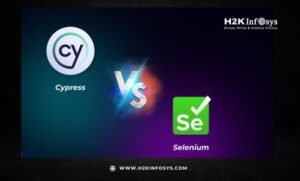Statement coverage testing is a crucial aspect of QA software testing that ensures that every statement in a piece of code is executed at least once in order to determine how comprehensive the testing was. This method provides useful information about how thoroughly a program’s source code has been tested by monitoring the execution of each line of code. Check out our qa courses online course to learn more.
How to Calculate Statement Coverage Testing?
Statement coverage is measured by dividing the number of executed statements by the total number of statements in the code. Statement coverage is computed as follows:
The calculation of the statement coverage is as follows: (Number of Executed Statements ÷ Total Statements) × 100%
Because this evaluation is expressed as a percentage, testers can identify how much of the code was actually used during testing.
In this case:
Number of executed statements: 7.
Total Statements: 10
Applying the formula for statement coverage:
To calculate statement coverage, use the formula (Number of Executed Statements ÷ Total Number of Statements) × 100%. That is, 7 ÷ 10 × 100% = 70%.
As a result, this code sample has a statement coverage of 70%. This demonstrates that during testing, 70% of the code’s statements were executed.
To ensure more complete software testing, aim for higher statement coverage. Additional coverage measures such as branch coverage and path coverage are required to fully evaluate the code’s quality.
Achieving 100% statement coverage does not imply that all cases have been tested.
Examples of Statement Coverage Testing
Let’s look at a short code snippet to demonstrate statement coverage.
def calculate_sum(a, b):
if a > b:
result = a + b
else:
result = a – b
return result
Let’s say we have a test suite with two test cases:
calculate_sum(5, 3)
calculate_sum(3, 5)
When these test cases are applied to the function, they execute both the ‘if’ and ‘otherwise’ branches, which cover all of the code statements. As a result, every statement in the code has been tested, as seen by the 100% statement coverage.
Statement coverage testing ensures that no lines of code are left untested and improves the software’s overall reliability.
It’s important to remember, however, that while it provides a minimum degree of coverage assessment, high statement coverage does not guarantee that there will be no errors or rigorous testing.
Other ways of evaluating code quality, such as branch coverage and path coverage, may be required.
Advantages and disadvantages of statement coverage testing
Let’s start with the Advantages.
Advantages of Statement Coverage Testing
- Detailed Code Inspection
Statement Coverage Testing ensures each line of code is executed at least once during testing.
This allows for the discovery of any untested code segments and ensures a more thorough review of the product.
Consider a financial application where testing statement coverage reveals that a certain calculation module has not been tested, necessitating further testing to address it.
Statement coverage helps developers find dead or inaccessible code quickly, allowing them to remove unnecessary sections.
For example, statement coverage analysis can reveal the redundancy of a section of code if it is left undisturbed during testing for an old feature.
Basic quality indicator
High statement coverage shows that a considerable portion of the code was used during testing, according to the basic quality indicator.
It demonstrates a certain amount of testing rigour, but it does not guarantee bug-free software. For instance, achieving a 90% statement coverage indicates a significant testing effort within the software.
Disadvantages of Statement coverage testing
Focus on Quantity rather than Quality
Statement coverage evaluates code execution, not testing quality. A high coverage percentage can be reached by using superficial tests that do not account for many conditions.
For example, testing a login system can cover all of the code lines yet leave out critical checks for invalid passwords.
Ignores Branches and Logic
Conditional structures, such as if and else statements, are not included when calculating statement coverage.
This could lead to poor testing of logical assumptions. For example, a software may test the “if” section of an if-else expression but not the “else” portion.
High statement coverage does not guarantee a bug-free application.
Even with comprehensive testing, some edge circumstances or unexpected events may remain untested.
For example, a scheduling tool may have good statement coverage but fails to account for changes in daylight saving time.
Statement coverage fails to capture the context of input values used during testing. This indicates that it may ignore certain inputs that result in specific behaviour.
For example, evaluating a shopping cart system may be successful if edge cases such as negative sums or big discounts are not considered.
Conclusion To learn more about Statement coverage Testing, you can check out our qa tester course online.





























